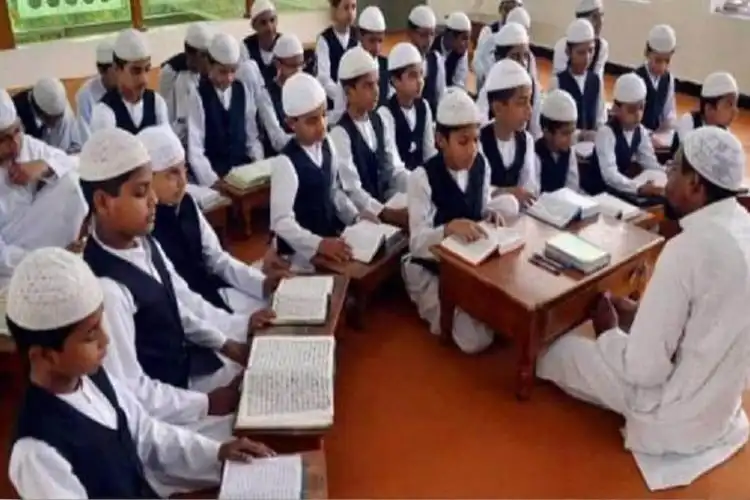
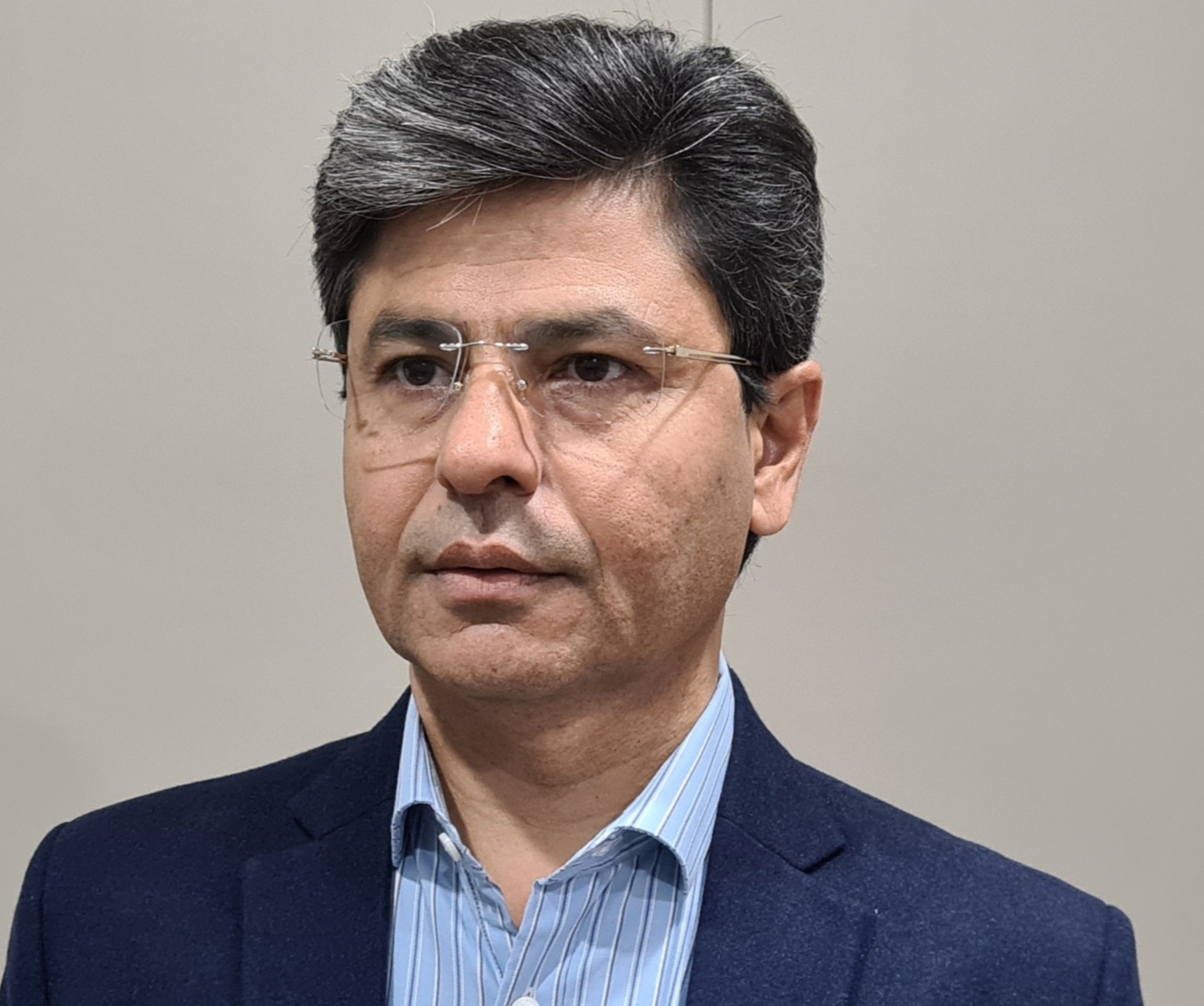 Atir Khan/
Atir Khan/
The government surveys of madrasas have great potential for the country’s progress if carried out in the right earnest. But they are happening at a time when memories of certain madrasas in Assam being demolished due to alleged terror links are fresh in people’s minds.
In Assam, certain madrasas were demolished even before their accused teachers were taken to court to face charges of terror links. It was interpreted as an onslaught on the madrasas due to the mistake of a few persons. This has shrouded the entire exercise aimed at studying the Muslim education system with an element of suspicion.
In India, madrasas have been at the forefront of the country’s freedom struggle. Unfortunately, their state of affairs ever since the Independence has been largely neglected. Their condition has worsened ever since they were excluded from the Right to Education Act.
Now Uttar Pradesh and Assam governments have embarked upon a massive exercise of mapping them. Dharam Pal Singh, a senior minister in the Yogi Adityanath cabinet said that the survey is meant to find the deficiencies in the education of the unrecognized madrasas in the state.
A questionnaire has been prepared for the survey. Following are the questions: What is the full name of the madrasa? What is the name of the organization running it? When was the madrasa established? Details of the location, whether run in a private or rented building? Is the seminary building suitable for students? What facilities do the students get? What is the total number of teachers and students? What curriculum is followed at the madrasa? What is the source of income used to run the madrasa? Are madrasa students studying elsewhere? Is the madrassa affiliated with any non-government organization or group?
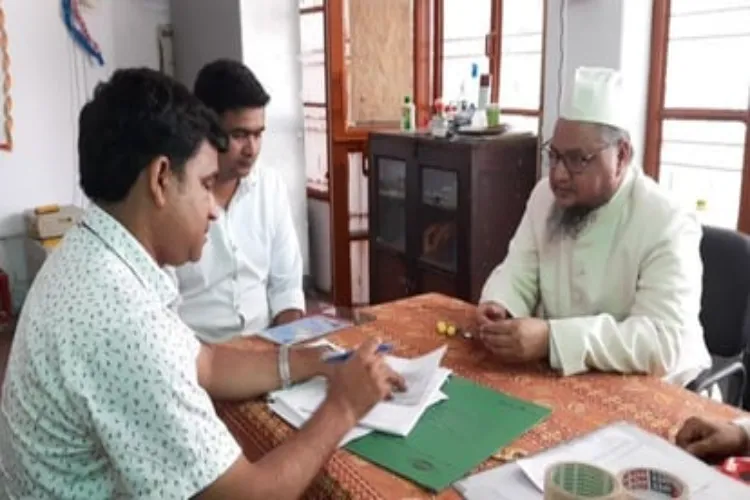
A survey team inspecting documents in a UP Madrasa
This move has challenged the status quo at the madrasas and has therefore created restlessness among the Ulemas, which have questioned the timing and the intent of the exercise.
The surveys were initiated after the National Commission for Protection of Child Rights submitted its report to all state governments asking them to map the madrasas.
The report has made the recommendation based on certain complaints of child rights violations. It is estimated that there are more than one lakh madrasas in the country.
NCPCR’s inquiry was aimed at finding ways to ensure that children from minority communities get both religious and cultural education as well as modern and foundational education, as guaranteed by their fundamental rights within the minority institutions.
Interestingly NCPCR in its 2021 report had not singled out madarsas. But it also recommended mapping of all unrecognized Vedic Pathshalas, Gumpas, and other forms of non-formal education centers. The purpose is to find out whether these institutions provide quality education to children and have a conducive environment. The Commission as the name suggests is mandated to protect child rights under the UN Charter.
However, there has been a sharp criticism among the Muslims and some political leaders, who on various counts have questioned the state government's extraordinary attention and targetting the Muslim institutions. They say the exercise should have been meant to improve the condition of the country’s all Out of School Children and not selectively.
Maulana Arshad Madani, a highly respected Islamic Scholar belonging to Darul-Uloom, one of the highest seats of Islamic learning in the world expressed his unhappiness with the Uttar Pradesh government’s move. The institute has called a meeting on 18th September to decide on the way forward. Maulana Khalid Firangi Mahali of Lucknow reacted by saying that madrasas are doing a good job in the field of education.
There have been reactions in political circles, which have benefitted from Muslim votes in the past. BSP Supreme Mayawati said the surveys are being carried out to terrorize Indian Muslims. Muslim Personal Law Board general secretary Maulana Khalid Saifullah said why the exercise has been confined to Muslim institutes only. AIMIM’s President AssaduddinOwasisaid that the surveys were a prototype of NRC.
Irrespective of what the politicians say, a sizeable progressive Muslim population has always believed that the focus of the community should be on the betterment of children’s education and not politics. The institutes should pay attention to progressive education and that the madrasas need to be in sync with the latest education being imparted in the world.
Muslim intellectuals had felt the need for improvement and had believed that the madrasa syllabus was ossified in time. Muslim poet-philosopher Sir Mumamad Iqbal when he addressed the All-India Muslim League meeting as its president in Lahore on March 21, 1932, he had reportedly said: “There is an urgent need for a radical revision of the curriculum of the madrasas, which will provide for their students a more realistic and appreciative understanding of the times in which they live, a method to meet the demands of this new day for the community he serves ‘In the name of Allah.”
Even today the scholars’ views on the need for reforms in Muslim education have not changed. But the contradiction in the words and deeds of certain political leaders in the present dispensation has created a trust deficit, which needs to be addressed.
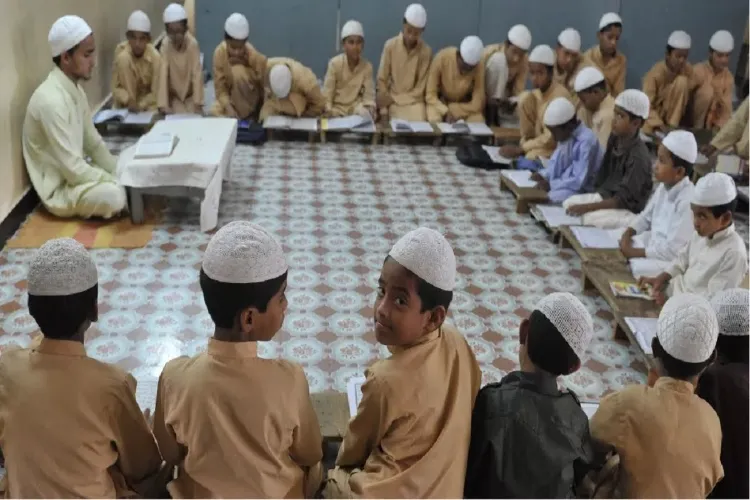
A class in a Madrasa in Uttar Pradesh
Akhtar-ul-Wasey a well-known Islamic scholar says, there is no harm in carrying out the surveys but reports have suggested that even government-recognized madrasas have not been provided with government funds for the last four years.
Indian madrasas are largely run-on charities and even poor people contribute with a handful of rice or flour to run these institutions, which have not relied either on government or foreign funding. A large percentage of these madrasas act as orphanages.
To bring about more clarity let’s look at the type of madrasas in India. There are three types of madrasas. First, they are unmapped and include the country’s top madrasas including highly reputed Darul-Uloom. It is run by donations from within the country. Such institutes constitute the largest number in the country.
The second type is recognized, which is registered in the state madrasa board and provides some kind of modern education to the children. They also receive textbooks, uniforms, other facilities, and funds from the government.
The third type is unrecognized, which has approached the government for funds but either due to insufficient infrastructure or some other reason they were not granted the recognition. They are also on their own.
According to the NCPCR report, the total number of Out of School children in India in the age group 6-14 years was 8.4 crores. Whereas the total number of children in India in the age group 6-14 years was 25 crores. The percentage of out-of-school children was 33%. The total number of Muslim children in India in the age group 6-14 years was 3.8 crores. The total number of Muslim Out of SchoolChildren is 1.1 crore (about 33 percent). As per the reports most such students are studying in unmapped madrasas, (which are also considered to be unrecognized by the government), and about 15 lakh student study in the recognized madrasas.
In the past Congress, Janta Dal, and BJP have made efforts to improve the condition of madrasas, by carrying out limited studies but no significant results were achieved.
When Narasimha Rao was the Prime Minister in the Congress regime some efforts were made to improve madrasas and a committee was formed to look into how they could be improved.
Madhav Rao Scindia was the then education minister, who had introduced English, Maths, and Science in some select madrasas, and the salaries of the school teachers were borne by the government.
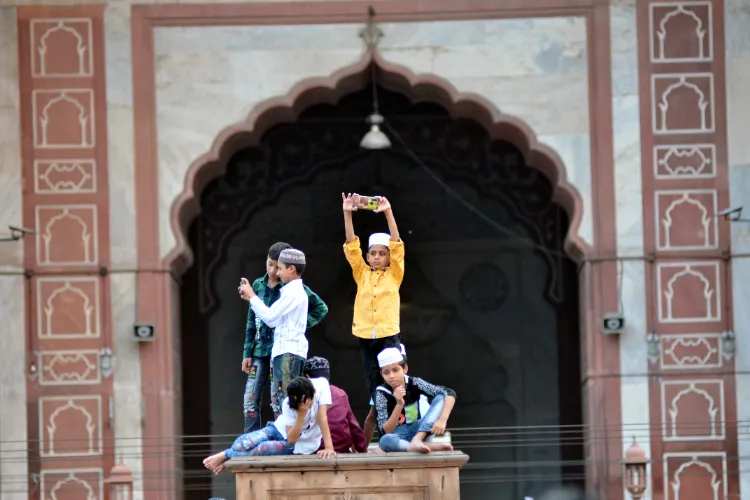
Muslim children having fun at Jama Masjid, New Delhi (Photo: Ravi Batra)
Similarly, when Atal Bihari Vajpayee was the Prime Minister and Murli Manohar Joshi was the then education minister, he tried to bring some reforms. But such efforts did not translate into any major actions.
L.K. Advani, the then Deputy Prime Minister and Home Ministry had on the floor of the house made a statement saying that nothing adverse had been found against madrasas in India.
The madrasas in India have largely remained neglected and left to fend for themselves due to their being involved in religious teaching only. But like other religious institutions across the country, some black sheep are indulging in undesirable activities such as terrorism, etc. Further, there is a lack of transparency. It needs to be understood that a small percentage of parents send children to madrasas by choice of pursuing Islamic studies. As some students are genuinely interested in advanced religious studies.
One also finds some very bright students in these institutes, who have even cracked All India Services competitive exams, considered to be one of the toughest in the world. Recently concluded NEET exams also prove their capability.
A majority of students in madrasas are children of poor backgrounds, who don’t have the privilege of going to school and belong to families which fall below the poverty line. So madrasas remain the only option for their overall growth.
As per the NCPCR report, the Muslim community contributes a share percentage of 69.18% to the religious minority population and contributes a share of merely 22,75 percent to the religious minority schools. It had a total of 4085 schools. On the other hand, the Christian community which makes up 11.54 percent of the total religious population, has a share of 71.96 of the total minority schools in India. It is also a fact that below 5 percent of students from madrasas make it to the undergraduate level.
There should be no doubt that madrasas need to be more inclusive in their approach and syllabus. There is no binding on madrasas to only impart religious studies. The Right to Education in all of its 39 Sections doesn’t restrict imparting religious education. Therefore, a blending of religious studies and modern education within the ambit of the Right to Education Act seems to be a good solution. The madrasas need to open up to modern studies and private schools need to impart religious studies as well.
While madrasas have their place and significance and should evolve for children’s betterment, there is also a need to increase the number of Muslim private schools in the country. The community should make efforts in this direction.
Now that the UP, Assam, and Uttarkhand governments have decided to carry out the surveys of madrasas it is expected that it’s going to be a meaningful exercise. The data from the surveys will be used for the benefit of education for Muslim students, who would eventually turn out to be better and more productive citizens.
The idea behind the surveys should not only be finding the deficiencies in the system or making it an instrument of harassment but it should be working towards doable solutions. If this mission is carried out earnestly and with the right intent it could become a game-changer for the Muslim community and the country’s progress at large.
ALSO READ: 12-point Madrasa survey in UP looks like MCQ
